In late 1901 locals in Kyabram found a common cause in government extravagance. They were particularly aggrieved that the recent federation of the Australian colonies had added another layer of government with seemingly no effect on reducing the former colonial (and now state) government.
Victoria remained in a precarious financial position, still reeling from the savage depression of the 1890s. A public meeting of disgruntled locals was held on November 13, 1901 at the Kyabram Mechanics Hall.
Local businessman Benjamin Goddard moved:
That, in view of the serious decrease in revenue of the State consequent upon the taking over of several important departments by the Commonwealth Parliament, this meeting is of [the] opinion that a considerable reduction in State expenditure is imperative to avoid excessive taxation. 1
Other speakers demanded heavy reductions to salaries and numbers of public servants. They did, though, emphasise that their target was the people at the top, not the ordinary workers.
A circular listing their aims was distributed widely amongst councils and organisations around Victoria. The response was immediate and overwhelming. A second circular was distributed in February 1902 urging meetings to be held around the state.
The politically engaged in Melbourne took notice. Would-be politician and founder of several interest groups, stockbroker George Meudell, bankrolled by Henry Butler of Sargood and Company, enlisted George Dean ‘then the cleverest election secretary in Victoria,’ to help ‘divert the movement to Melbourne.’ 2 The outcome was a conference held at the Athenaeum Theatre on 17 April 1917 involving 300 delegates from around the state.
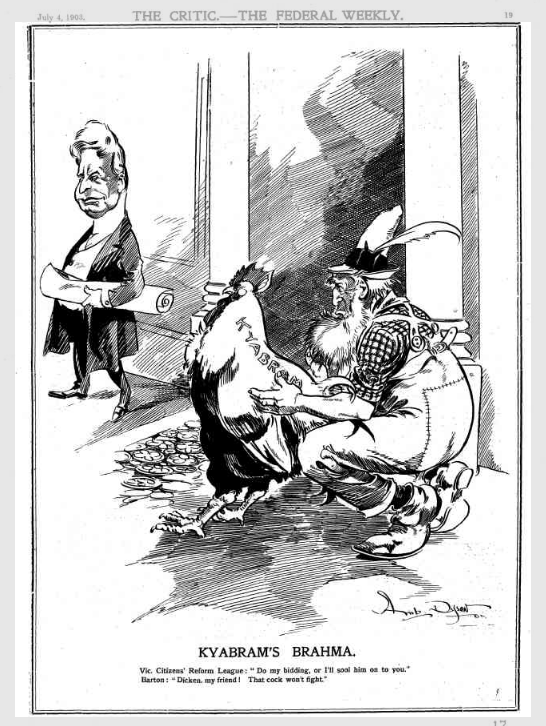
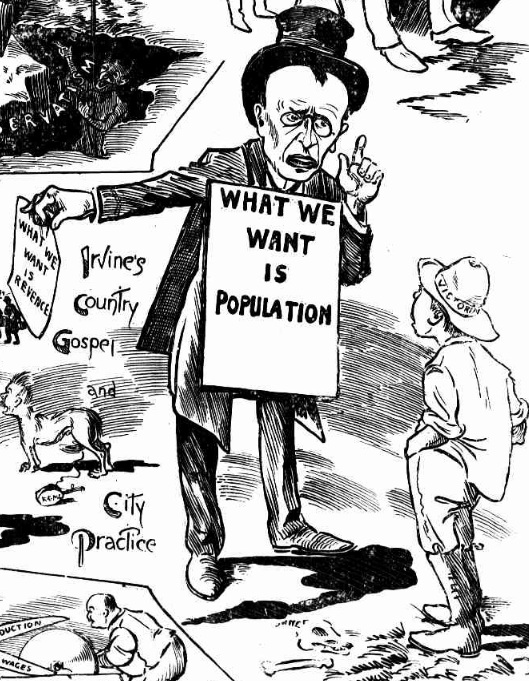
Kyabram’s Brahma Vic. Citizens’ Reform League: “Do my bidding, or I’ll sool him on to you.” Barton: “Dicken, my friend! That cock won’t fight.” Critic, 4 July 1903, p 17. The image shows the Federal Prime Minister Edmund Barton turning away from the Kyabram movement.
Irvine’s country gospel and city practice The Tocsin, 6 August 1903, p 3. Image shows Victorian Premier Irvine’s public message “What we want is population”, but the side notice reads “What we want is revenge.”
The Premier, Alexander Peacock, underestimated the movement, initially dismissing it, and then attempting unsuccessfully to come to a compromise. The Kyamabramites and their supporters were not impressed. The shrewd and uncompromising William ‘Iceberg’ Irvine successfully moved a no confidence motion in Peacock’s government and became Premier on 10 June 1902. His attempts at reducing the number of seats in state parliament, supported by the Kyabram Movement, was flatly rejected by parliamentarians. Irvine went to an election which he won handsomely.
G.H.D. [George Henry Dancey], The nut crackers, Punch, 28 November 1901, p 1. Shows the deposed premier Peacock and his successor Irvine crushing the ‘Labour’ party.
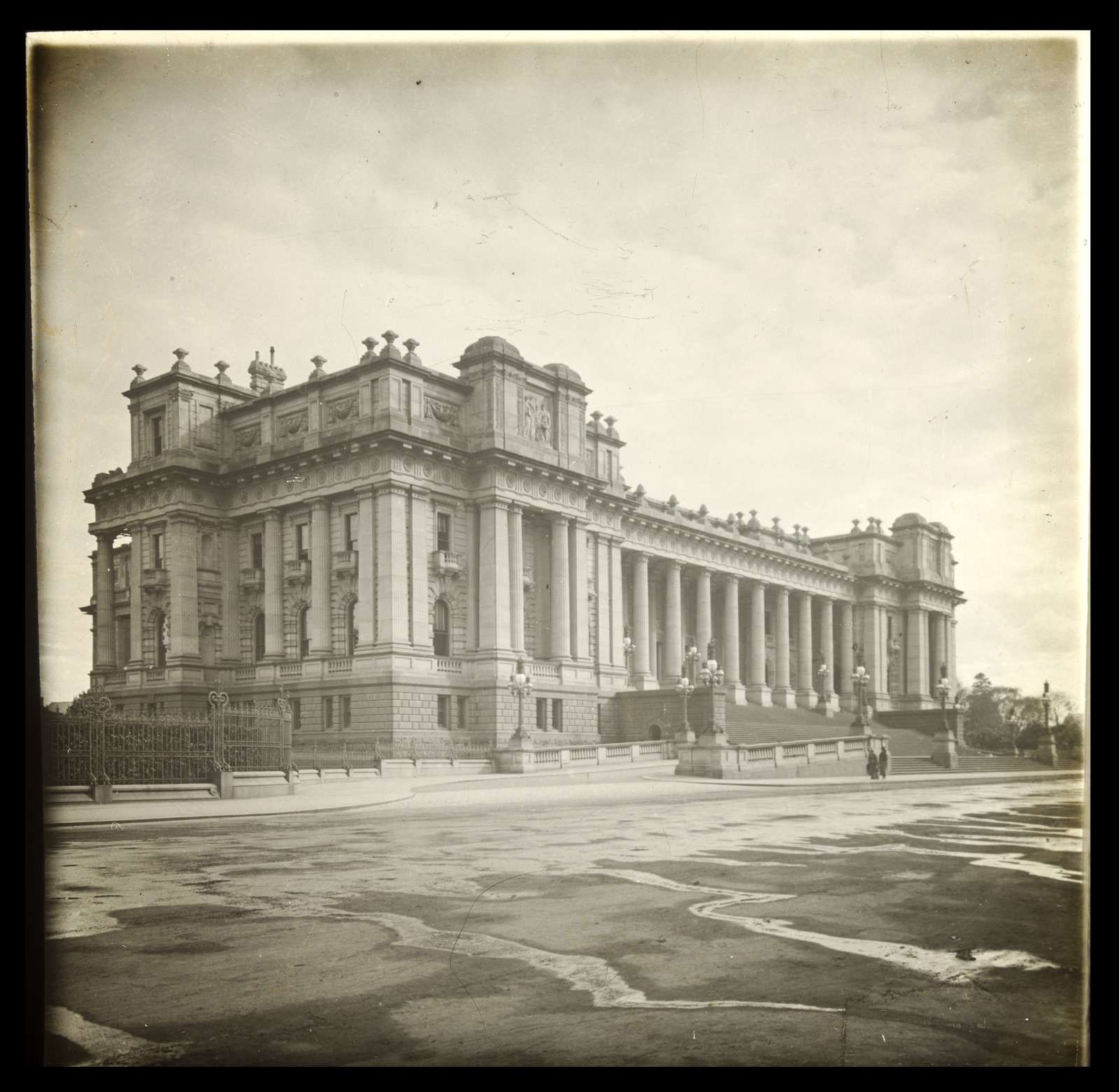 Parliament House, Melbourne, [ca. 1875-ca. 1938]. Photo by John Henry Harvey; H92.150/841
Parliament House, Melbourne, [ca. 1875-ca. 1938]. Photo by John Henry Harvey; H92.150/841
The events of 1894
Past history influenced current events. In the 1890s tumult of bank collapses, unemployment and debt, the public service suffered significant job losses and salary cuts. Government workers united in angry opposition.
In August 1894 Premier James Patterson lost a confidence vote in parliament. Beaten at the subsequent election, he blamed the loss on the votes cast by state employees. Conservatives became convinced that public servants wielded too much power at the ballot box.
Having won the 1902 election, William Irvine, with an eye to the events of 1894, altered his reform agenda to negate the public service vote. No more would state employees be treated as equal citizens voting in their residential electorate, rather they would vote for three public service representatives in the Assembly, and one in the Council. This move was aimed at rendering their vote irrelevant.
Irvine also greatly reduced member numbers in the Assembly, from 95 to 68, while the Councils numbers fell from 48 to 35. With his huge parliamentary majority the reform bill was passed.
A strike by railway enginemen in May 1903 was met by Irvine with characteristic inflexibility and more draconian legislation. The strike was crushed within a week.
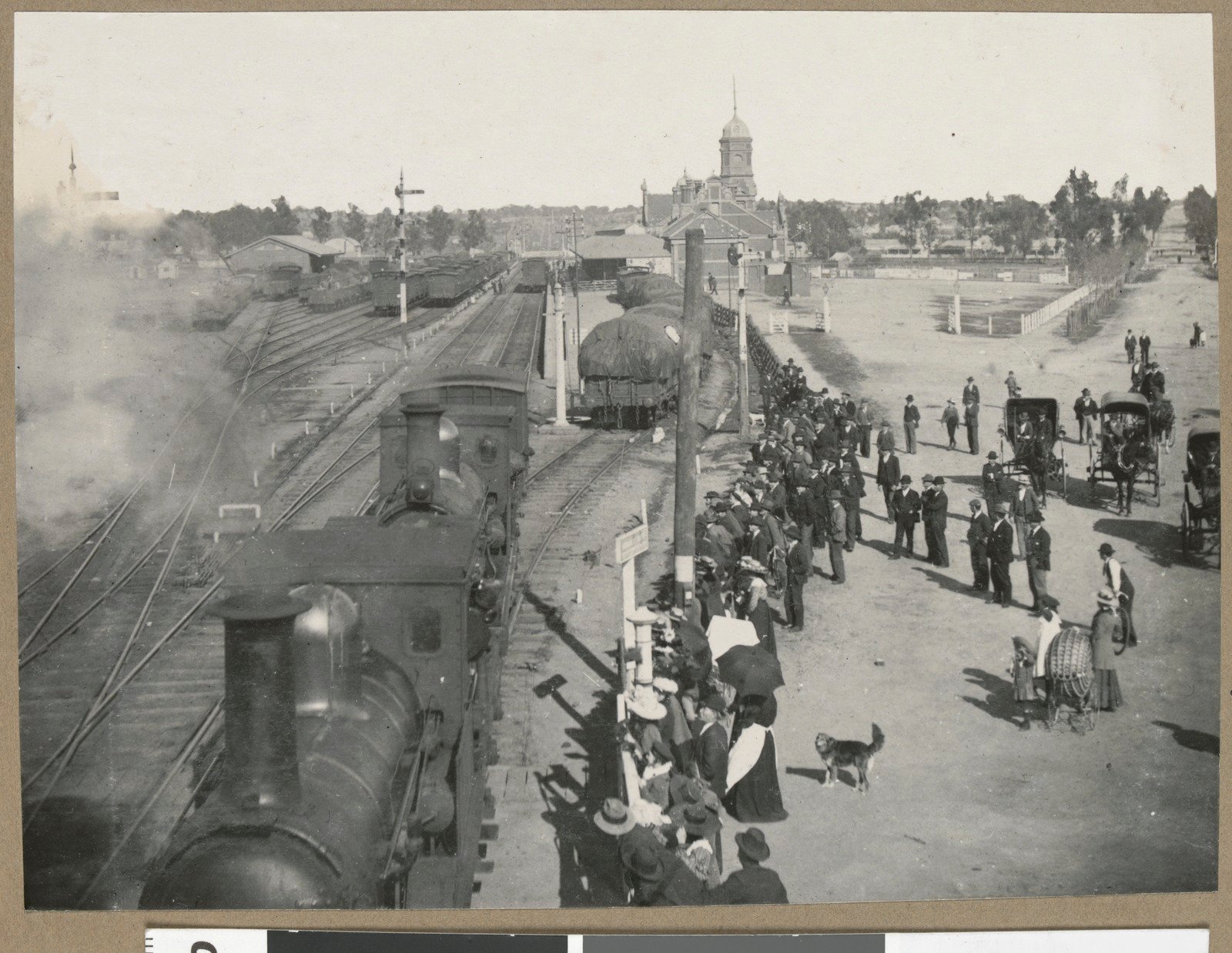 Arrival of train from Ballarat during the Strike. At Maryborough, May 8 1903; H1077
Arrival of train from Ballarat during the Strike. At Maryborough, May 8 1903; H1077
The Railway Strike, Herald, 9 May 1903, p 3
The Kyabram Movement conceded that Irvine’s reform agenda contained
several proposals with which the reformers do not agree, but, like sensible men, they perceive the necessity for swallowing the disagreeable provisions for the sake of establishing the general principle embodied in the Bill. 3
Irvine had shrewdly aligned with the popular Kyabram Movement to win the election. Now he was a premier with a large majority and was no longer beholden to any group.
End of the Irvine whirlwind
The Irvine whirlwind didn’t last long. In February 1904 he resigned from the premiership due to ill health.
He was replaced by the wily Thomas Bent who quietly changed the Constitution Act again, this time to restore normal citizen voting rights to public servants.
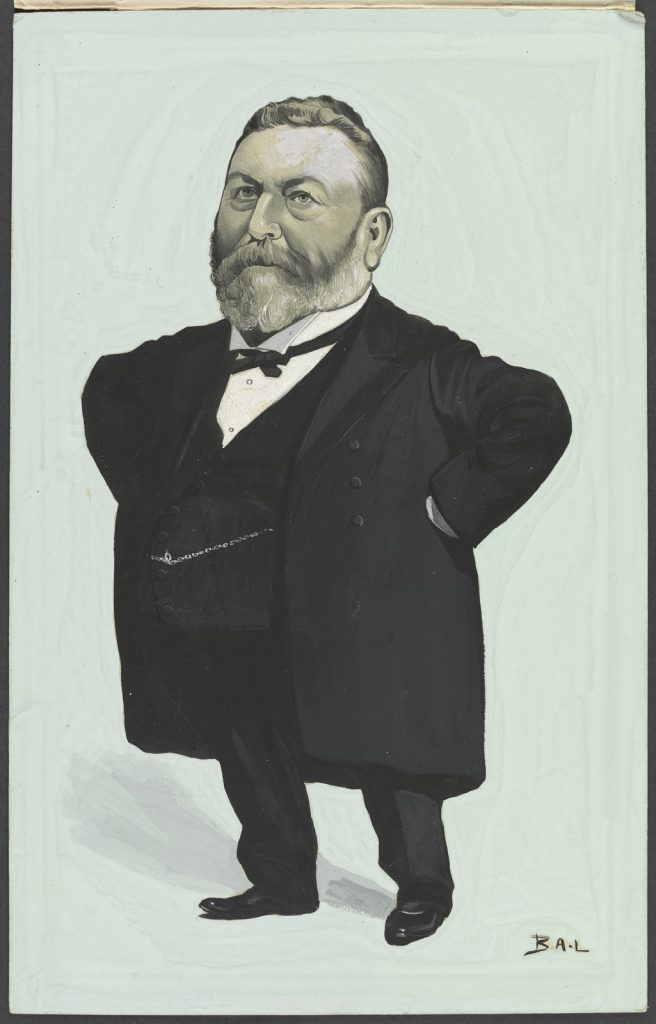
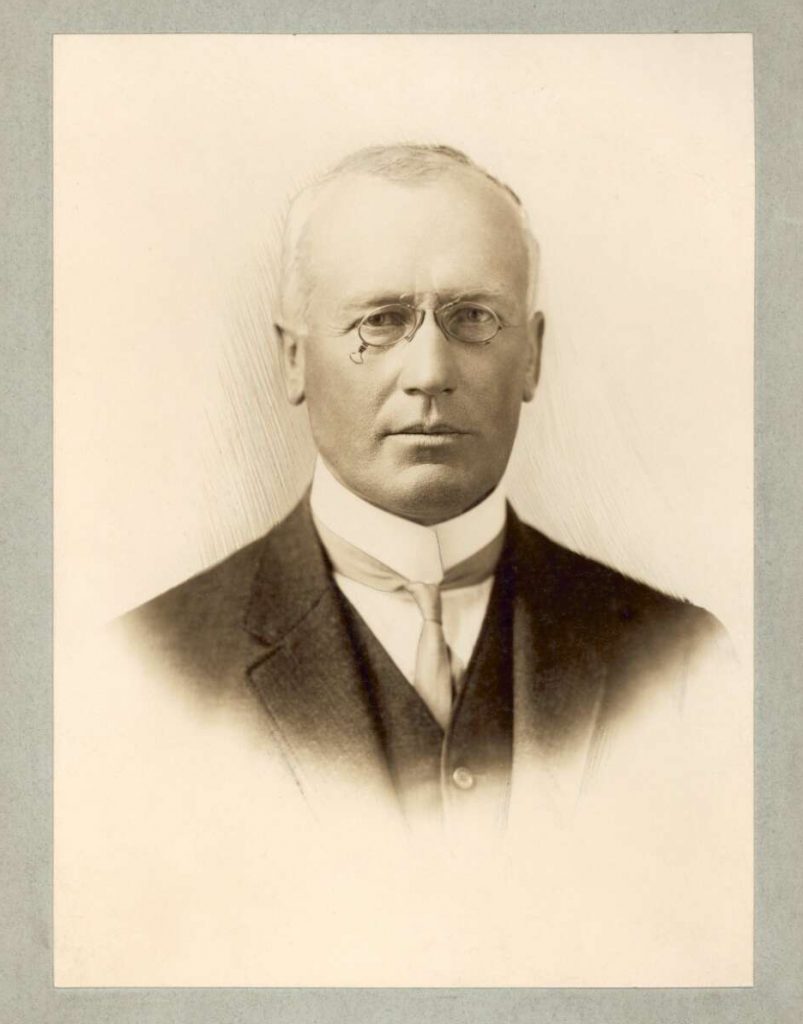
Portrait of Sir William Hill Irvine, 19–? Image courtesy of National Library of Australia; PIC Box PIC/7086 #PIC/7086
In 1906 Irvine resigned from state parliament but his parliamentary valedictory, rather than a benign and bipartisan send off, reopened old wounds. Labor member George Prendergast was in no mood to forgive and forget Irvine’s harsh response to the enginemen’s strike.
… the Bill which he attempted to place on the statute book would be a disgrace to the most Conservative Government in the world. It out-Russiaed Russia; it went further than the most despotic Government in the world would attempt to go, and was certainly more despotic in its provisions than any measure ever introduced in the British Parliament. 4
It seems the railway workers didn’t easily forget the Kyabram Movement’s association with the rise of ‘Iceberg’ Irvine either. It is claimed that for many years after, parcels travelling by rail to Kyabram mysteriously failed to reach their destination.5
William Irvine’s health recovered sufficiently for him to win a seat in Federal Parliament in December, 1906. Following his retirement from politics in 1918 he was appointed Chief Justice of the Supreme Court of Victoria.
 Opening of Parliament by the Hon. Sir William Irvine, Lieut.-Governor of Victoria 3rd July, 1929; H30248
Opening of Parliament by the Hon. Sir William Irvine, Lieut.-Governor of Victoria 3rd July, 1929; H30248
Notable legislation
- Constitution Act 1903
- reducing numbers of seats in both houses of parliament
- creating specific seats for public servant vote
- Electoral Districts Boundaries Act 1903
- implement new boundaries reflecting reduction in representation
- Railways employees strike Act 1903
- savage legislation to break strike
- Constitution Act 1906
- Thomas Bent amended this Act when he took over as premier, allowing public servants to again vote in their residential electorates.
See also
Footnotes
- Nielsen, HL, 1902, The voice of the people, or, The history of the Kyabram Reform Movement, Arbuckle, Waddell & Fawckner, Melbourne, p 7
- Meudell, GD,1935, The pleasant career of a spendthrift, Wilke, Melbourne, p 34
- Nielsen, HL, p 77
- Parliamentary debates, Govt. Printer, Melbourne, 24 July 1906, p 449
- Monument Australia, Kyabram Reform Movement, viewed 19 December 2021, <https://monumentaustralia.org.au/themes/government/state/display/97863-kyabram-reform-movement.>

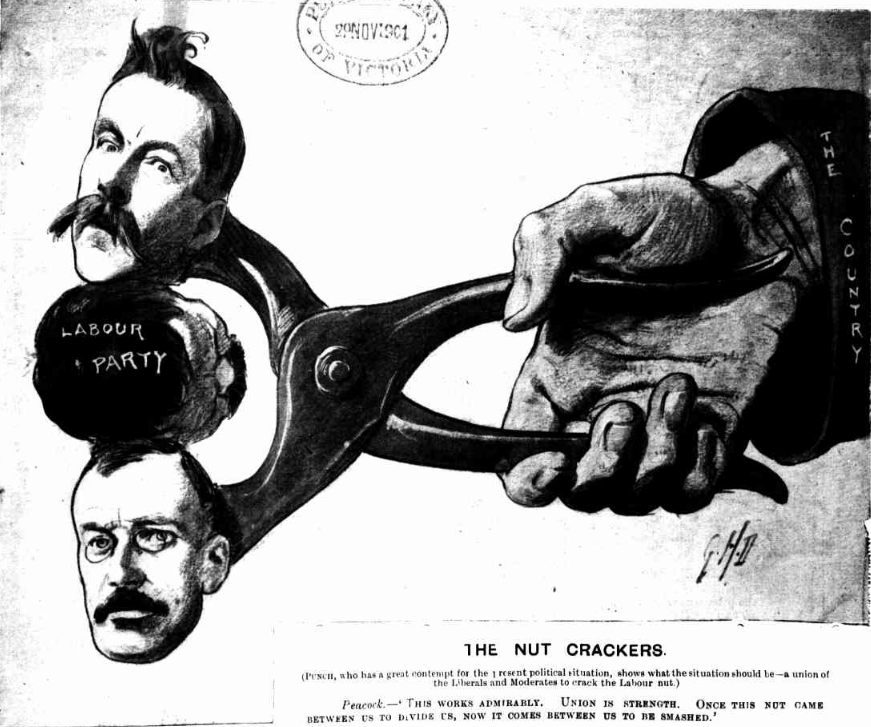
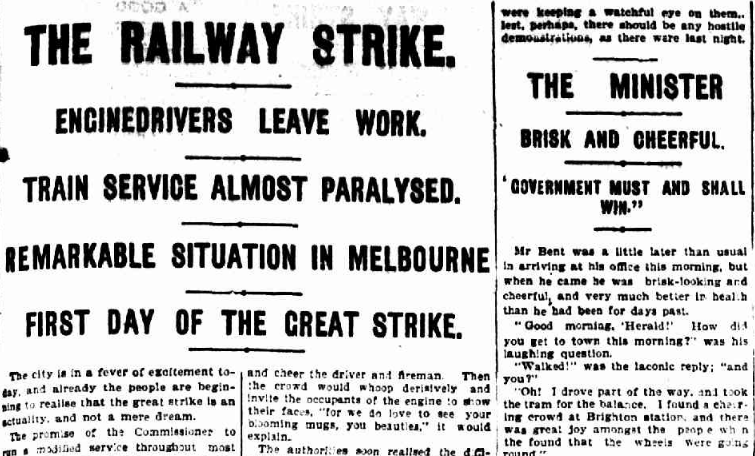

Thankyou Andrew for this post – very informative.
George W S Dean is my Great Grandfather and I would be interested in any further information you might about him – beyond the reference you have listed which I will chase up.
Hi Mary, That’s an interesting connection. I will do some searching and forward any further information I find about George W.S. Dean